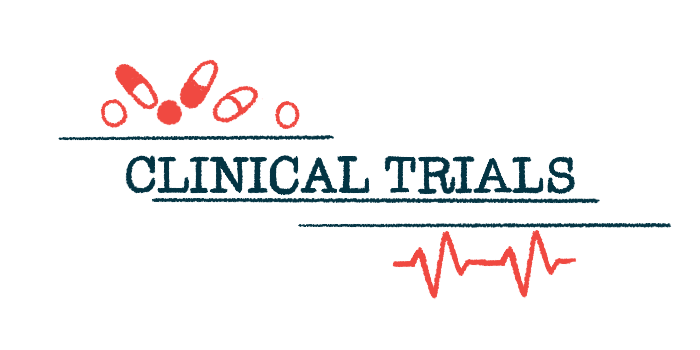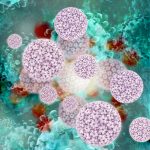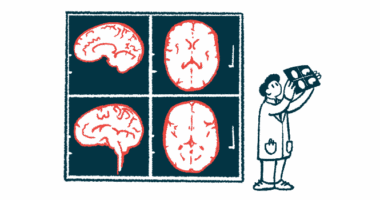Enspryng’s Phase 4 trial favors new group of AQP4-NMOSD patients
Untreated adults and those with poor response to rituximab now eligible

A global Phase 4 clinical trial of Enspryng (satralizumab), approved to treat the most common form of neuromyelitis optica spectrum disorder (NMOSD), is enrolling newly diagnosed and other patients who could not or did not take part in Phase 3 trials of the therapy.
In addition to people new to NMOSD, eligible patients include those not using any standard treatment for this disease, and patients who failed to respond adequately to recent treatment with rituximab, often used off-label for NMOSD.
The open-label trial, dubbed SAkuraBONSAI (NCT05269667), is testing the therapy in up to 100 adults, ages 18 to 74, who are positive for antibodies against the aquaporin-4 (AQP4) protein, the most common target of NMOSD-driving antibodies. It is recruiting at sites in the U.S., France, Italy, Japan, South Korea, and Turkey.
The trial’s design is detailed in the study “SAkuraBONSAI: Protocol design of a novel, prospective study to explore clinical, imaging, and biomarker outcomes in patients with AQP4-IgG-seropositive neuromyelitis optica spectrum disorder receiving open-label satralizumab,” published in the journal Frontiers in Neurology.
Open-label study aims to enroll 100 NMOSD patients with anti-AQP4 antibodies
An autoimmune disease, NMOSD is caused by the production of self-reactive antibodies that attack proteins, most commonly AQP-4, in cells that support the nervous system. This typically leads to inflammation of the optic nerve — the nerve that sends and receives signals from the eye — and the spinal cord, with subsequent disease symptoms including vision loss and problems with movement control.
Periodic inflammatory relapses, separated by periods of remission, can cause significant and permanent disability. Disease treatments are largely immunosuppressive, working to reduce the frequency and severity of such episodes.
Enspryng, developed by Chugai Pharmaceutical (a member of the Roche group), is an antibody-based treatment for NMOSD patients positive for anti-AQP4 antibodies. Given through under-the-skin injections, the therapy works by blocking interleukin-6 (IL-6) signaling, which drives inflammation in the disease.
Regulatory approvals were supported by data from two Phase 3 trials — SAkuraSky (NCT02028884) and SAkuraStar (NCT02073279) — showing that Enspryng was superior to a placebo at reducing the risk of relapse in NMOSD patients with anti-AQP4 antibodies.
SAkuraSky tested the therapy in combination with standard immunosuppressive treatment in 83 NMOSD patients, ages 12 and older, while SAkuraStar assessed Enspryng alone in 95 adults.
These trials excluded patients treated with rituximab in the previous six months, and few patients with a history of such treatment were enrolled. Rituximab (sold as Rituxan and other brands, with biosimilars available) works by killing antibody-producing B-cells.
Studies have suggested that some NMOSD patients who do not respond to B-cell-depleting therapies may benefit from IL-6-blocking treatment.
SAkuraBONSAI was launched to assess Enspryng in these underrepresented Phase 3 trial patients, who will be placed in two groups. One group will be composed of up to 60 newly diagnosed and treatment-naive patients, meaning those who have never used a disease-modifying or immunosuppressive therapy. The other group will consist of up to 40 patients with an inadequate response to rituximab.
“Both SAkuraSky and SAkuraStar excluded patients who had been treated with [rituximab] in the prior 6 months, resulting in the enrollment of fewer than 20 patients with historic [rituximab] use,” the study noted.
Newly diagnosed and treatment-naive patients must have experienced at least one NMOSD attack or relapse within the prior year, while rituximab users must have lived with NMOSD for at least five years and have tried at least two rituximab treatment courses. The most recent course must be within six months of trial screening.
All enrolled will be treated with Enspryng, at its approved dose regimen, for up to two years (92 weeks). The first and second dose, given two weeks apart, will be administered at the patient’s trial site, while subsequent treatment injections may be given at home once every four weeks.
The trial’s main goal is to evaluate the therapy’s efficacy through changes in relapse rates and relapse severity. Relapse severity will be assessed with the Expanded Disability Status Scale and visual acuity tests. Changes in cognitive function will also be evaluated.
Secondary objectives include changes in imaging outcomes, such as damage and inflammation in the optic nerve and spinal cord, and eye-related damage.
Exploratory goals include Enspryng’s effects on the levels of nerve damage biomarkers in the blood and cerebrospinal fluid, as well as identifying potential associations between biomarker levels and clinical and imaging measures.
Patient-reported outcomes regarding symptom severity, the ability to work and perform regular activities, and treatment satisfaction will be assessed. Researchers also will assess Enspryng’s pharmacokinetics (movement into, through, and out of the body), target engagement, safety, and ability to promote an immune response.
“SAkuraBONSAI study offers an opportunity to develop a greater understanding of the natural history of NMOSD, including the potential to identify imaging and molecular biomarkers,” the researchers wrote.
Study findings may also “inform the prognosis and management of patients with newly diagnosed NMOSD, while understanding how patients who do not respond to rituximab therapy compare with a treatment-naïve population,” they added.
The trial is expected to conclude in January 2027.






